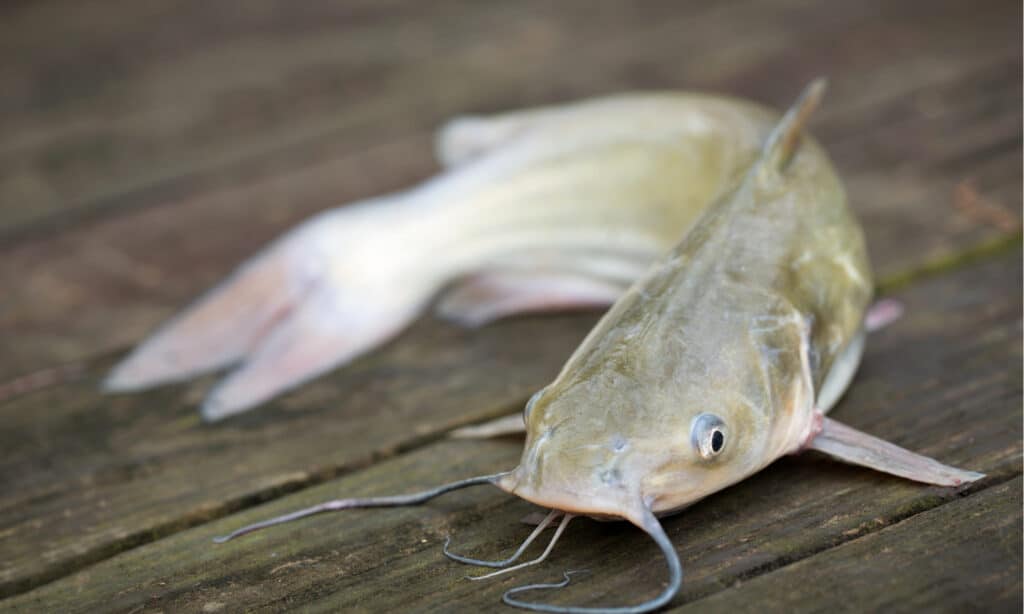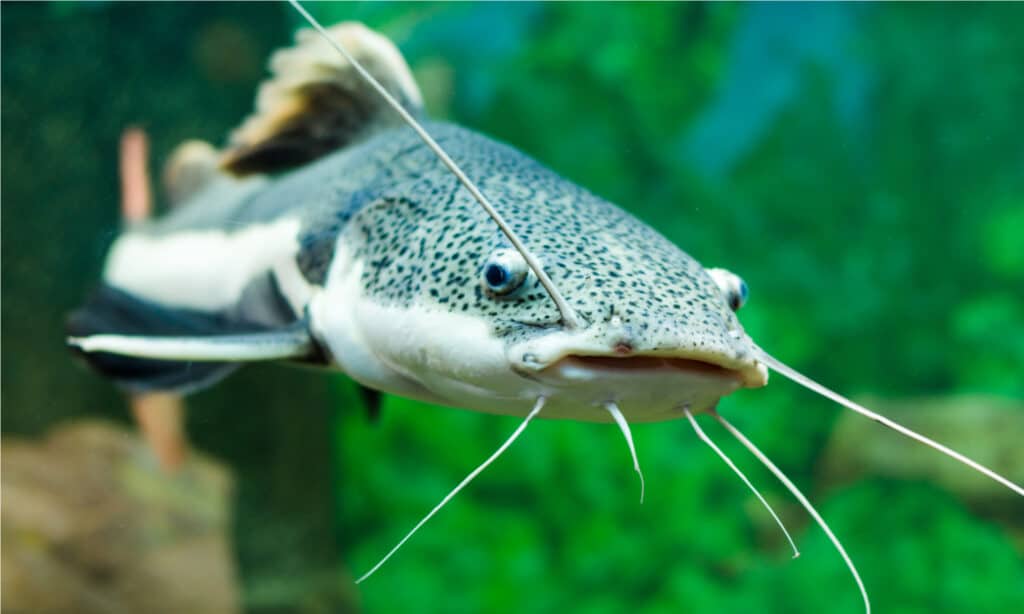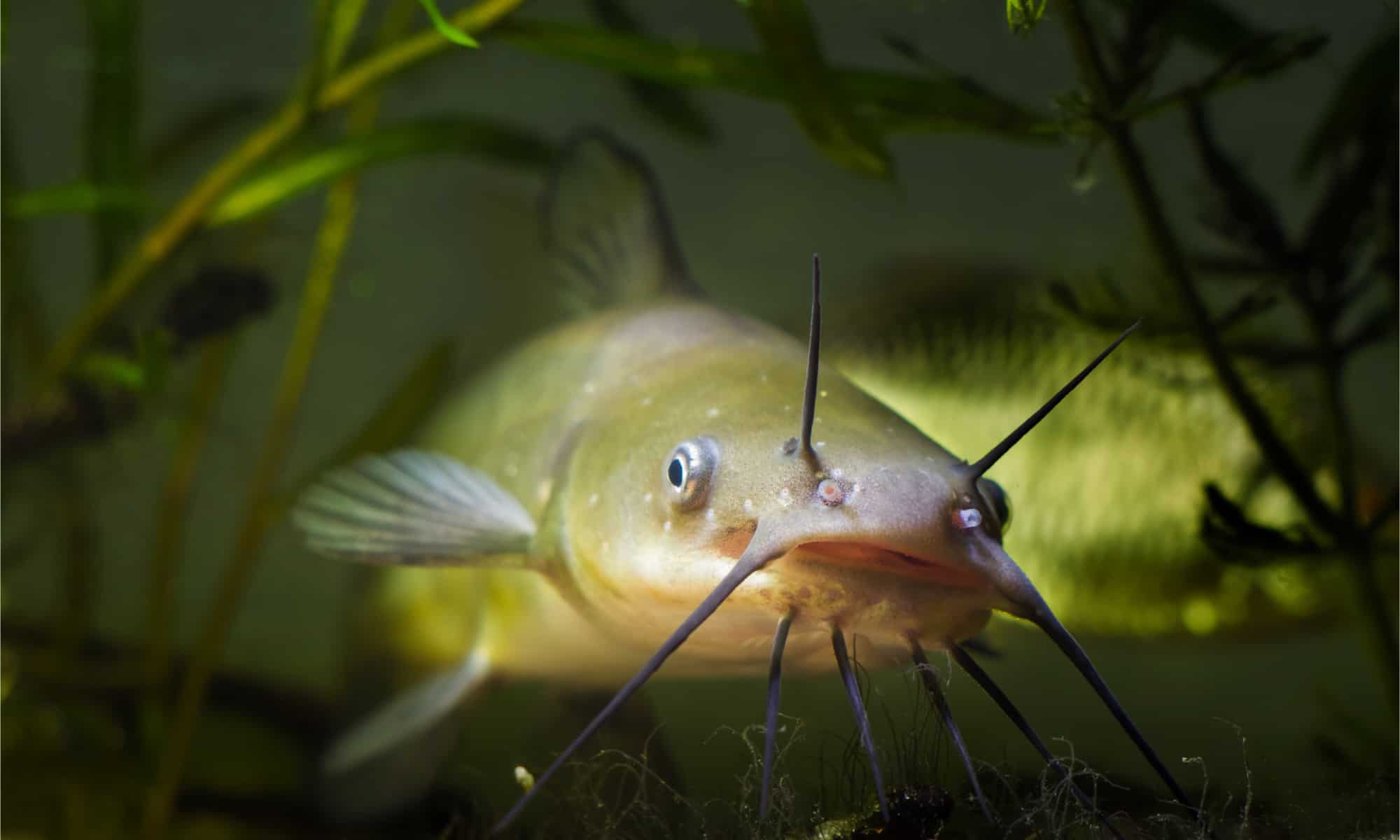The catfish may be a common freshwater catch in most lakes and other bodies of freshwater, but it is far more interesting than that. Many human societies around the world enjoy catfish as a delicacy. This is both a benefit and a drawback. The catfish may be driven to extinction if no hunting regulations exist. On the other hand, the catfish is permitted to prosper when humans are concerned about its existence. But apart from being served on a plate, the catfish sets itself apart from other marine species due to its incredible sensory apparatus, which sends vital information about the composition of its surroundings.
Among around 3,000 species, the channel catfish is one of the most common in the United States, especially in Florida. It has even acquired the distinction of being the most fished catfish species on the planet. If you’ve ever eaten catfish, you’ve probably had this type of fish. But how big do channel catfish grow? And how huge is the largest channel catfish ever caught in Florida? Below, we will discover the answer to that and more!
How Big is the Largest Channel Catfish Ever Caught in Florida?

The largest channel catfish ever caught in Florida weighed 44.5 pounds.
©Jennifer White Maxwell/Shutterstock.com
The channel catfish is among the most common catfish types caught in Florida. Florida’s channel catfish state record weighed 44.5 pounds and was caught by angler Joe Purvis in Lake Bluff, Lake County, on May 19, 1985. Channel catfish are usually caught at 15 to 24 inches long, weighing somewhere between 10 to 15 pounds. The longest channel catfish caught in Florida measured 52 inches, but it wasn’t the same catfish that weighed a maximum of 44.5 pounds.
How Long Do Channel Catfish Live?
Although not common, the maximum age of channel catfish in the state is thought to be 22 years old. Channel catfish mature after two to three years and reproduce between May and July when the water is warm.
How Big is the Largest Channel Catfish Ever Caught in the World?

The largest channel catfish ever caught weighed 58 pounds.
©Ryan Somma, CC BY-SA 2.0, via Wikimedia Commons – Original / License
South Carolina has the world record for the largest channel catfish. A 58-pounder (26.3 kg) caught in the Santee-Cooper Reservoir (Lake Moultrie) on July 7, 1964, holds the record for the world’s largest channel catfish capture. The fish measured about 48 inches long and had a girth of 29 inches. The fish is among the three biggest catfish ever caught on the planet, following two other massive catfish species –the blue and the flathead catfish.
Given the channel catfish’s bass-like proclivity for hitting artificial lures of various kinds, it was not unexpected that W.H. Whaley caught a channel catfish on a bucktail jig on that hot summer day in July 1964. What was unexpected was that the 58-pound catfish he captured would set a world record that would stand for more than 50 years.
In the past, anglers entering fish in the prestigious Field & Stream Magazine Fishing Contest were frequently surprised to learn that they were also eligible for a world record. Whaley of Pineville, South Carolina, came to hold the world record for channel catfish taken in the Santee-Cooper Lakes (Marion and Moultrie). He was persuaded to register the fish in Field & Stream’s 54th annual fishing contest. Once longstanding contest editor Mike Ball certified the catch as legal, he also forwarded the requisite paperwork to the International Game Fish Association.
What Do Channel Catfish Look Like?

Channel catfish have spots on their bodies, especially young ones.
©Sergey Goruppa/Shutterstock.com
Catfish can be identified by their sensory barbels that resemble whiskers and a forked tail. The anal fin of a channel catfish is rounded, and there are black patches all over its back and sides. During spawning, males become extremely black and develop a thicker pad on their heads.
Despite some similarities in hue and look to the well-renowned blue catfish, there are some significant distinctions. The blue catfish is named after its blue and gray scales, whereas channel catfish have more of an olive or gray appearance overall. Channel catfish have spots on their bodies, especially young ones, but blue catfish do not. The number of rays on the anal fin of the blue catfish is a proven technique to distinguish between the two varieties of fish. The anal fin of a channel catfish contains 30 rays or less, whereas the anal fin of a blue catfish has 30 to 35 rays on average.
Where Do Channel Catfish Live?
The channel catfish is among the most prominent catfish species in North America, prized for both its food and sporting value. The channel catfish can be found in most rivers, freshwater lakes, streams, and ponds in southern Canada, the United States, and northern Mexico. It is distinguishable from other North American catfish species by its spotted body and deep-forked tail, distinguishing it from spotted blue and white catfish.
Catfish are one of the most abundant fish on Earth, and they may be found on every continent except Antarctica. There are slightly about 3,000 different species of catfish, with blue, flathead, and channel catfish being the most popular in the United States.
What Do Channel Catfish Eat?
The channel catfish mainly eat crustaceans, such as crayfish, mollusks, small fish, insect larvae, live or dead insects, and occasional vegetation. Hence, these are also some of the favored baits of channel cat anglers. Various artificial and “stink” baits fished in the lower water column or on the bottom are very effective when targeting these fish. The channel catfish makes heavy, determined runs when hooked. Adults normally feed by scent and touch on the bottom, but channel catfish have larger eyes and are more adapted to sight feeding than other catfish.

The longest channel catfish was 48 inches long. The heaviest channel catfish weighed 58 pounds!
©Aleron Val/Shutterstock.com
Other Large Catfish Caught in Florida:
Largest Blue Catfish in Florida
As per the record of the Florida Fish and Wildlife Conservation Commission, the heaviest blue catfish ever collected in Florida was 69.5 pounds. On May 30, 2015, angler William Stewart III (Bill) caught it in the Choctawhatchee River.
Stewart competed in the Choctawhatchee Catfish Roundup contest and caught four flathead catfish before landing a huge blue catfish. After locating an official FWC investigator, he had the blue catfish measured and weighed. It weighed 69.5 pounds and measured 49.5 inches long (just over 4 feet). He broke the previous record of 64.5 pounds set by James Mitchell in 2008, which he also caught in the Choctawhatchee River in Florida’s panhandle.
However, in April 2018, a 120-pound blue catfish was caught and authenticated. Because the second fish was taken with a trotline rather than a “rod and reel,” it did not break the official record.
Largest Flathead Catfish in Florida
The largest recorded flathead catfish in Florida weighed a whopping 69.9 pounds and measured 48.5 inches long and 38.25 inches wide.
After fisherman Lavon Nowling caught a flathead catfish nearly as long as him, he now holds the record for the longest flathead catfish ever caught in Florida. In the Yellow River in Santa Rosa County, Nowling caught the fish with his rod, reel, and live bait. The Florida Fish and Wildlife Conservation Commission validated a state record flathead catfish weighing 69.9 pounds, shattering the previous record flathead catch of 69.3 pounds from the same river in 2019. Flathead catfish are not native to Florida’s Panhandle river basins, according to the FWC. They like lengthy, slow-moving, and moderately murky rivers, and they live alone, making them more difficult to catch than other catfish.
Largest Catfish Ever Caught in the World
The Giant Mekong Catfish is the world’s largest catfish. They are found in China, Thailand, and Southeast Asia. The normal Mekong catfish weighs between 350 and 450 pounds, but some can grow to be quite huge. The Guinness Book of World Records’ largest Mekong Giant Catfish is 8 feet 10 inches long and weighs 646 pounds. This one was caught in 2005 in northern Thailand, and the record still stands today.

Redtail catfish are one of 3,000 species of catfish,
©Bk87/Shutterstock.com
The Best Locations to Catch Channel Catfish in Florida:
Apalachicola River
Fishing for channel, flathead, and blue catfish is outstanding in the Apalachicola River, Florida’s largest river. Big channel catfishing is greatest from April to early July, while flathead fishing begins in April and continues through the summer. Small catfish can be caught year-round, although the best months are spring and summer.
The Choctawhatchee River
Channel and flathead catfish fishing is excellent in the Choctawhatchee River. This is also where the world’s largest blue catfish was caught, so there’s a good potential of getting a big catfish here. If the water remains warm, channel catfishing is optimal from late May to early July and October to November. Catfish of all sizes can be caught here all year.
The Ochlockonee River
Bullhead, channel, flathead, and white catfish are all abundant in the Ochlockonee River. Flathead catfish angling is best in April, while channel catfish angling is best from mid-May to early summer. Until the water gets chilly in October or November, both channels and flatheads will continue to bite. Small catfish can be caught all year in the river. However, fishing slows considerably during the winter months.
Up Next
- Blue Catfish vs Channel Catfish: 5 Key Differences — Both of these fish are frequently caught by fishermen in North America, so learn how to identify these catfish and tell them apart.
- Carp vs Catfish — These are the two of the tastiest fish around! Each provides a different experience, so get to know these two before you go fishing.
- Sea Monsters! The 10 Biggest Trophy Fish Ever Caught in South Carolina — This beautiful state has both freshwater fishing and saltwater fishing with miles and miles of water. Here are the 10 biggest trophy fish ever caught in South Carolina!
Thank you for reading! Have some feedback for us? Contact the AZ Animals editorial team.








